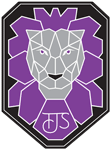A safe and positive environment is essential for learning. Knowing and following expectations and procedures will support students in making positive choices and academic progress. When students engage in behaviors that do not follow their school’s expectations, school staff members are expected to respond promptly, appropriately and consistently:
- School staff will inform the parents/guardians of any student whose behavior is in conflict with established expectations and procedures.
- School staff are expected to document, in the student’s behavior record, incidents of behaviors that are managed outside the classroom.
- Students, their parents/guardians and school staff are responsible for working collaboratively to support the expectations and procedures outlined in the Student Behavior Handbook.
Administrative Actions and Levels of Behavior Violations
Behaviors are divided into five levels. A Level 1 violation is the least severe (usually managed in the classroom), and a Level 5 violation is the most severe. For each violation on the charts below, (pages 17-24), there is a defined range of levels or responses; whichever level the first (•) appears under is the minimum response and whichever level the last (•) appears under is the maximum response. There are also examples of interventions and responses which:
- Correct and teach positive behavior so students can learn and be safe and respectful.
- Provide examples of appropriate administrative action.
- Make every reasonable effort to repair harm and address behavior concerns using interventions and the least severe response that is appropriate.
The following factors must be considered prior to developing interventions or assigning administrative action:
- The student’s age, maturity, intention and understanding of the impact of the behavior
- The student’s ability to repair harm caused by the behavior
- The student’s willingness to repair harm caused by the behavior
- The student’s disciplinary record including the nature of prior behavior, the number of prior instances of behavior, and the interventions and administrative action applied
- The nature, severity, and scope of the behavior
- The circumstances and context in which the behavior occurred, including its impact on the learning environment
- The student’s individualized Education Plan (IEP) or 504 plan, if applicable
Full and Equitable Participation in Early Learning per the Pupil Fair Dismissal Act:
A pupil enrolled in a preschool or pre-kindergarten program, including a child participating in early childhood family education, school readiness, school readiness plus, voluntary prekindergarten, Head Start, or other school-based preschool or prekindergarten program, or kindergarten through grade 3 is not subject to dismissals of one school day or more under this Handbook, subject to state and federal law for students receiving special education services. Expulsions and exclusions may be used only after resources outlined below have been exhausted, and only in circumstances where there is an ongoing serious safety threat to the child or others.
Non Exclusionary discipline must include at least one of the following:
- collaborating with the pupil’s family or guardian, child mental health consultant or provider, education specialist, student support staff or other community-based support;
- creating a plan, written with the parent or guardian, that details the action and support needed for the pupil to fully participate in the current educational program, including a preschool or prekindergarten program; or
- providing a referral for needed support services, including parenting education, other supportive education interventions, or, where appropriate, an evaluation to determine if the pupil is eligible for special education services or section 504 services.
Note: Please refer to the glossary for additional terms and definitions, related Minnesota statutory references, and other information.

